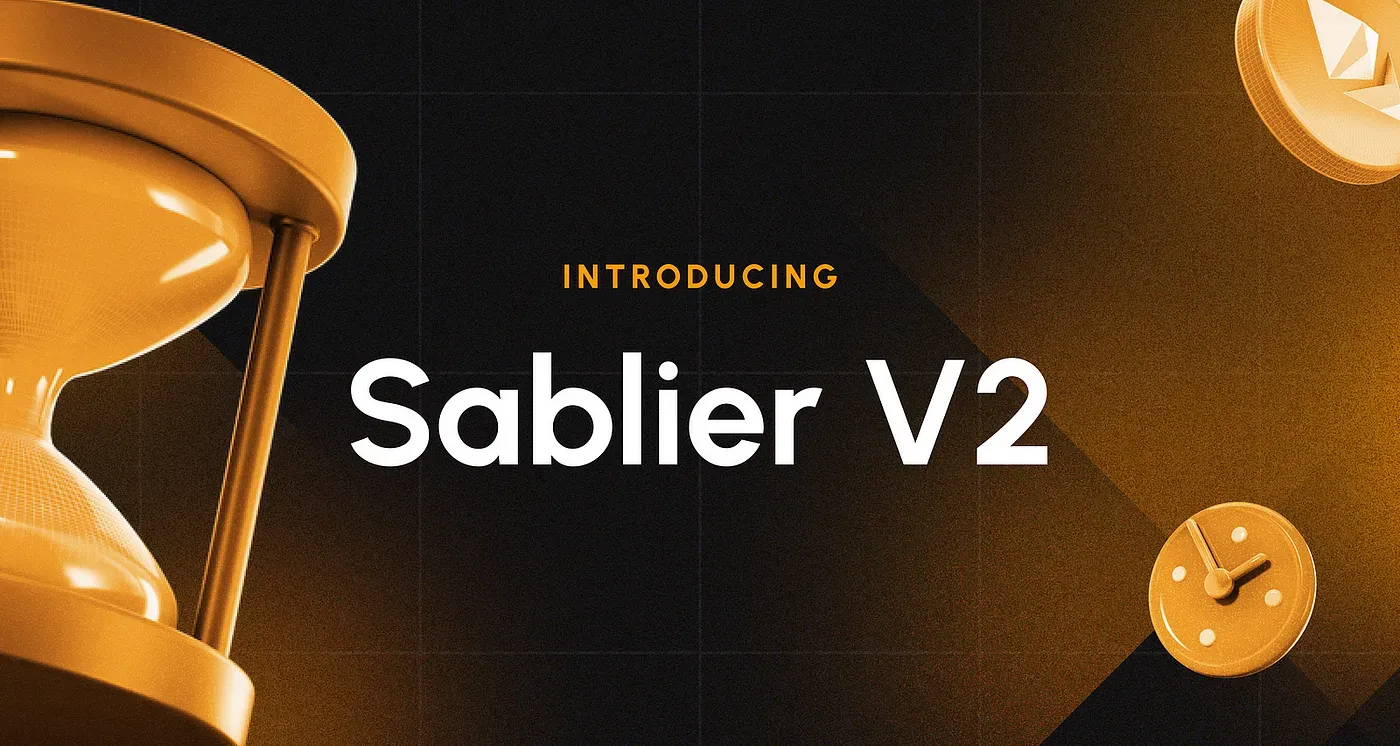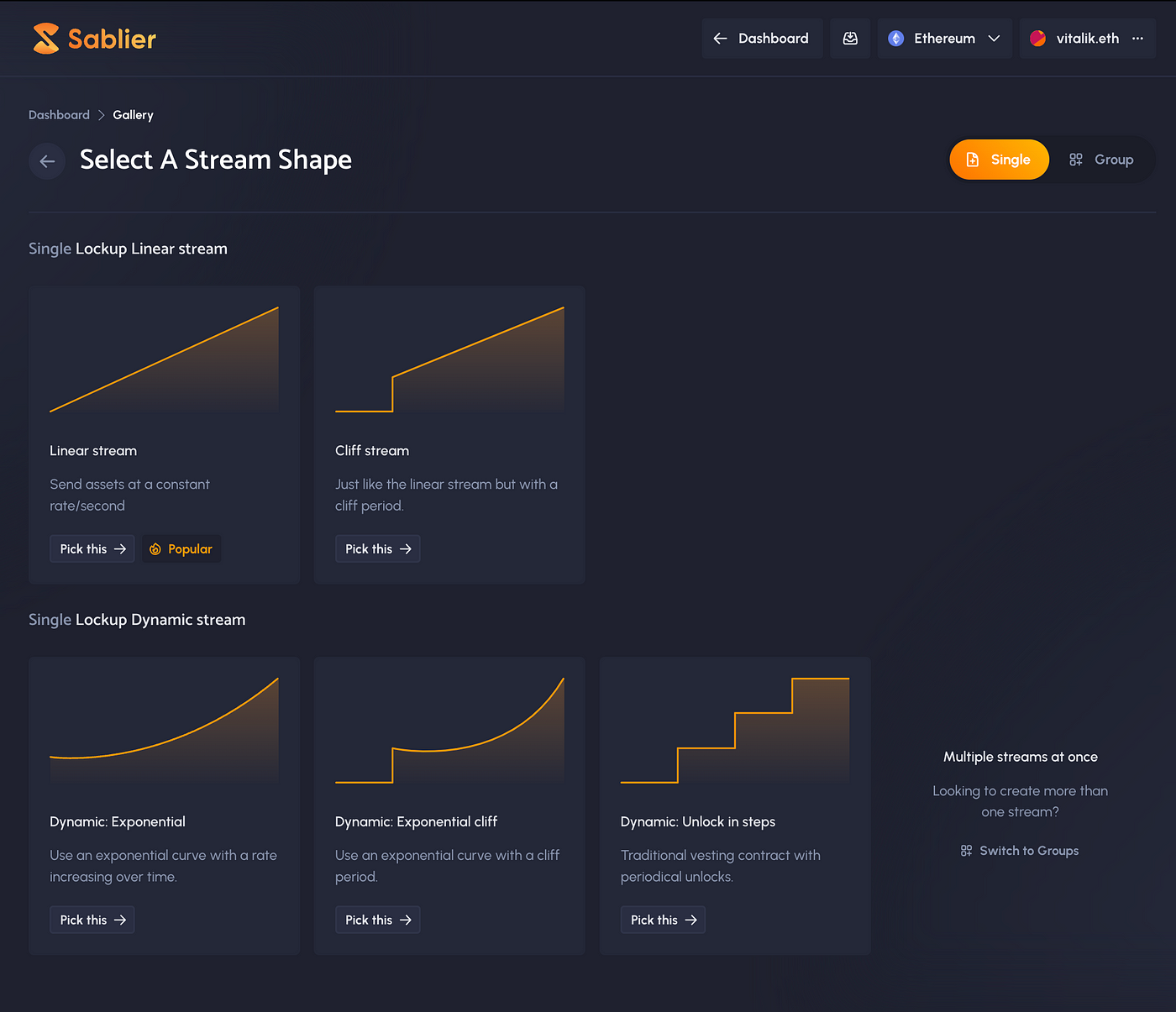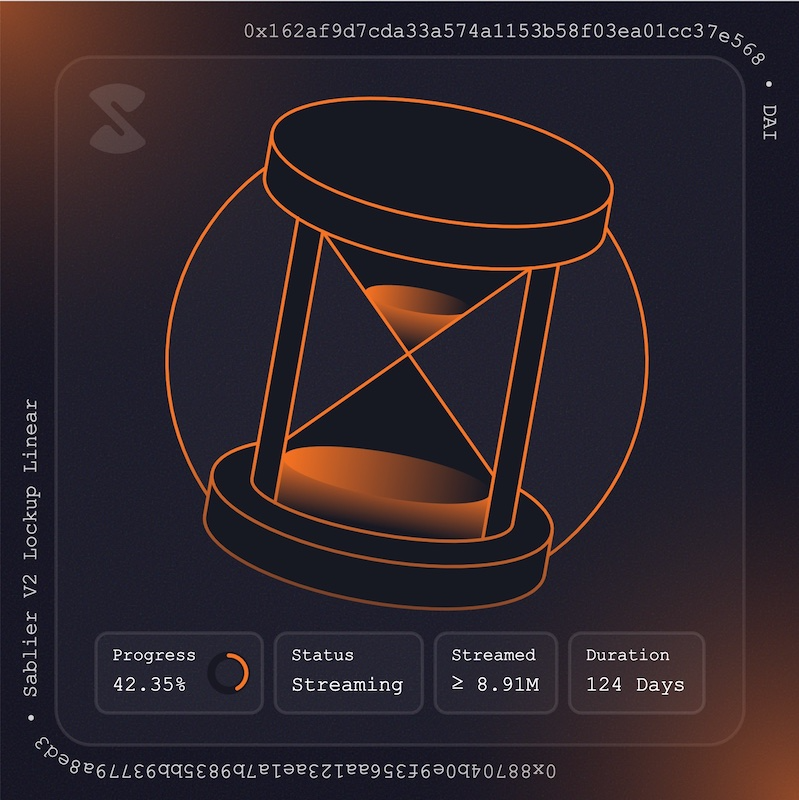Introducing Sablier V2
The next-generation token streaming protocol is here.

You can start using the new protocol on app.sablier.com.
Sablier V1 was launched in December 2019 as a proof of concept for a token streaming design that involved making a one-time deposit gradually released over time (we now refer to this design as “Lockup”).
As simple as it was, V1 found product/market fit with vesting and grew to tens of millions, then hundreds of millions, and eventually over $1B in cumulative payment volume.
Today, we are incredibly excited to announce the launch of Sablier V2, a next-generation streaming protocol that doubles down on our flagship Lockup design. The protocol targets the EVM and works great for ERC-20 token vesting, payroll, airdrops, grants, and more.
This blog post provides a high-level overview of Sablier V2. For a deeper technical dive, check out the Sablier Docs website and the Sablier V2 Core repository.
Features
The most notable features of Sablier V2 are:
- Lockup Dynamic: a new money lego that lets you create streams that evolve as exponentials, logarithms, step functions, or any other curve.
- Lockup Linear: a streamlined revamp of V1, with support for cliff periods.
- Every stream is a transferrable ERC-721 NFT.
- Third-party interfaces can monetize their Sablier integration by charging broker fees.
- Integrators can implement on-chain hooks to get notified when streams are canceled, withdrawn, or renounced
- Batching streams: create multiple streams with one go
- Non-cancelable streams.
These features are not only powerful, but they are also unique.
No other streaming protocol offers non-linear streaming and transferrable stream NFTs, all in the context of a system that can be conveniently integrated via hooks.
Sablier V2 truly stands apart in a league of its own, pushing boundaries and redefining the landscape of payment protocols in web3.
Lockup Dynamic
Lockup Dynamic streams are the main attraction of Sablier V2, as they enable the creation of any type of streaming curve, including non-linear ones.
Non-linear streaming blows wide open an entirely new space of incentive design. Imagine setting up a vesting plan that releases exponentially more tokens as time goes by. The longer your employee stays with your project, the more they will be getting paid.
The streaming function is composed of data tuples of the form (amount, exponent, milestone), which we call “segments”. The exponent is fed to an on-chain power function. The segments are covered in detail in the docs.
On the Sablier Interface, we support only a few streaming models, but the potential for innovation is limitless when you interact programmatically with the contracts. Let us know what design you will come up with!

NFTs
In Sablier V2, every stream is an ERC-721 non-fungible token (NFT) whose owner is the stream’s recipient. The recipient can transfer the NFT to another address, which also transfers the right to withdraw funds from the stream.
The transferability of the NFT makes streams tradable and usable as collateral in DeFi. Imagine an NFT lending marketplace that allows users to borrow funds by locking their streams as collateral (effectively borrowing against their future income).
The best part? Sablier V2 NFTs are represented as unique on-chain generated hourglass SVGs, which change their color and content based on user data.

Deployments
Sablier V2 is deployed to Ethereum and six other EVM-compatible chains:
- Arbitrum
- Optimism
- Polygon
- Gnosis Chain
- BNB Smart Chain
- Avalanche
Click here to see the full list of deployment addresses.
Foundry
Sablier V2 was built, tested, and formatted with the Foundry application development toolkit.
Building it wouldn’t have been possible without the support offered by the Foundry community. We hope our work has given back as much to the community as it’s given us.
If your Ethereum project doesn’t use Foundry yet, what are you waiting for?
Security
Ensuring the security of Sablier V2 is our utmost priority. We have dedicated significant efforts toward designing and testing the protocol to ensure its safety and reliability.
- Our Foundry test suite includes hundreds of files, which contain unit, integration, invariant, fork, and fuzz tests.
- We engaged a team of senior security researchers from Cantina to perform two full-length audits.
- We further engaged multiple specialized security firms and independent experts to scrutinize parts of the protocol.
All bugs discovered during the testing and auditing phases were fixed. However, we cannot guarantee all bugs have already been discovered and resolved; we encourage the community to audit our contracts and security.
To incentivize responsible bug disclosure, we offer a public bug bounty of up to $50,000 offered for critical bugs. More detail on the terms of the program can be found on GitHub.
License
Decentralized payment infrastructure should ultimately be free, open-source software, but the Sablier community deserves to be the first to build an ecosystem around the Sablier V2 codebase.
With this in mind, Sablier V2 Core is launched under the Business Source License 1.1. This license is essentially a time-delayed General Public License v3.0-or-later. It restricts the utilization of the V2 source code in a commercial production environment for up to four years, after which it transitions into a GPL license indefinitely.
Please note that the BUSL 1.1 license does not impact integrations. We have licensed all code necessary for external integrations under GPL, including but not limited to interfaces, data types, and all of V2 Periphery. This ensures that any protocol, web interface, mobile app, or other projects can seamlessly integrate with V2 as anticipated.
Sablier Labs retains the ability to speed up the transition to GPL or provide license exemptions at any point. This can be achieved by updating the files housed at the lockup-license-date.sablier.eth and lockup-license-grants.sablier.eth ENS domains.
For a more in-depth understanding of this license, please refer to this FAQ.
Sablier V1
Thanks to Ethereum, the Sablier V1 protocol will continue to run in perpetuity. You can access it via manual operation or the following legacy interfaces:
Closing thoughts
This is only the beginning.
Over the next few weeks, we will release further updates, publish additional documentation, and announce integrations with several launch partners. We welcome all feedback and involvement from our community.
If you are integrating and wish to get in touch, please fill out this form, and we will respond as soon as possible. Alternatively, reach out in the #integrations channel on Discord.
To get involved and stay posted:
- Use Sablier V2 at app.sablier.com
- Follow Sablier on Twitter
- Join the Sablier Discord server
- Subscribe to the Sablier blog
Happy streaming! ⏳


